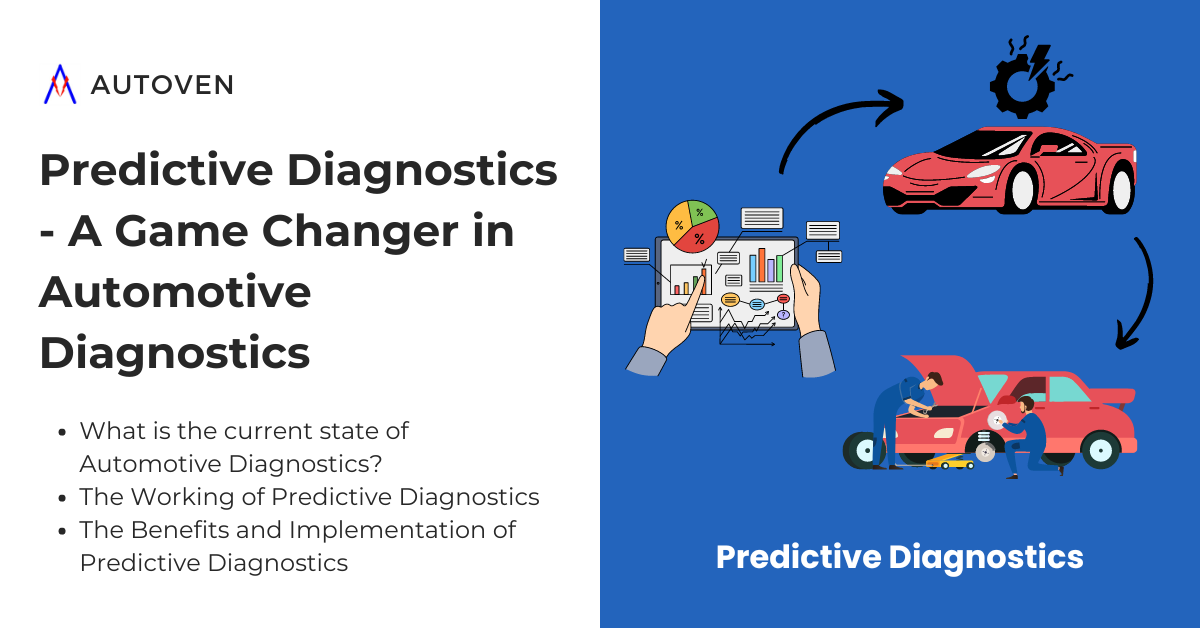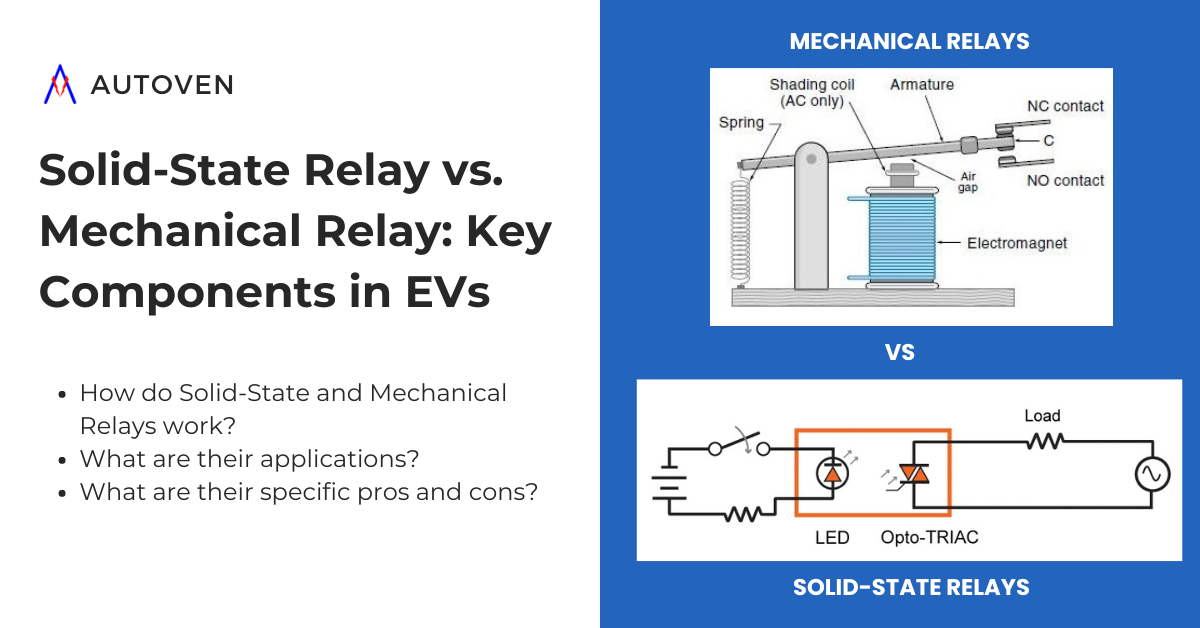Predictive diagnostics transforms EV maintenance with advanced data analytics and smart insights to anticipate and prevent issues beforehand
Introduction
In automotive diagnostics, especially the EV industry, identifying and fixing issues promptly is essential for optimal vehicle performance. Traditional vehicle diagnostics focuses on reactive responses to problems, often leading to unexpected downtime. Predictive diagnostics, however, is changing the landscape by offering a forward-looking approach that leverages data and analytics to foresee problems before they occur.
The Current State of Automotive Diagnostics
Vehicle diagnostics has evolved from simple manual inspections to sophisticated onboard diagnostic systems (OBD). Modern vehicles come equipped with sensors that track everything from engine temperature to battery voltage. When a fault is detected, the onboard system sends a signal, and mechanics access the data to identify the issue.
While this system is effective, it’s reactive. The vehicle only informs drivers or technicians after a problem has occurred, meaning repairs happen after the fault manifests. This leads to unplanned downtime, higher repair costs, and potential safety issues.
Introducing Predictive Diagnostics
Predictive diagnostics goes beyond traditional methods by using advanced data analytics and machine learning algorithms. These technologies analyze the performance of vehicle components in real-time and predict potential failures before they cause an issue, allowing for proactive interventions.
Predictive diagnostics does more than identify problems early; it anticipates issues by analyzing trends in data from thousands of vehicles. Consider an electric vehicle’s battery, a crucial component where failure can lead to significant downtime and high replacement costs. With predictive diagnostics, the system continuously monitors critical metrics like battery temperature, voltage, and charging cycles. Imagine the algorithm detecting a pattern where the battery’s temperature rises slightly after each charge, combined with a gradual decline in charge retention. This trend might be missed in a single vehicle but becomes apparent when analyzing data across thousands of similar batteries. The system recognizes this pattern as an early indicator of potential thermal runaway or significant battery degradation.
By identifying this trend, predictive diagnostics can alert the OEM to schedule maintenance or replace the battery before it reaches a critical failure point, preventing a costly breakdown and potential safety hazards. This approach isn’t just about early detection; it’s about leveraging data from a vast number of vehicles to anticipate and mitigate issues before they ever become a problem, ensuring maximum vehicle uptime and safety.
How Predictive Diagnostics Works
Predictive diagnostics collects and analyzes data from vehicle sensors and external sources, such as environmental conditions. This data is processed using artificial intelligence (AI) models trained to detect anomalies. The system then predicts when a failure is likely to occur.
For example, an EV’s battery management system (BMS) continuously monitors battery voltage, temperature, and state of charge. The predictive diagnostics system detects deviations from normal patterns and forecasts when the battery might overheat or fail. This early warning allows technicians to take action before the battery experiences irreversible damage.
The Benefits of Predictive Diagnostics
Predictive diagnostics has several benefits over traditional diagnostic approaches:
- Increased Uptime: Vehicles spend less time in the shop because issues are identified before they cause major breakdowns. Maintenance can be scheduled at the most convenient times, minimizing disruptions.
- Reduced Repair Costs: Early intervention is enabled, which often means less expensive repairs. Catching a problem before it escalates can prevent costly part replacements.
- Improved Safety: Vehicles running at optimal health are less likely to experience dangerous malfunctions. By addressing subtle signs of anomalies early, predictive diagnostics ensure that vehicles remain safe and reliable on the road.
- Longer Vehicle Lifespan: By addressing issues early, components experience less wear and tear, extending the vehicle’s overall life and its parts.
- Environmental Impact: Vehicles that run efficiently use less energy. Predictive diagnostics contributes to this by ensuring all systems are functioning properly.
Implementing Predictive Diagnostics
Implementing predictive diagnostics in automotive fleets requires a combination of hardware, software, and data analytics expertise. Here are the key steps involved:
- Data Collection: Sensors installed in vehicles continuously collect performance data. This includes information on engine health, battery status, brake wear, and more.
- Data Transmission: The collected data is sent to a cloud-based platform for real-time analysis. This platform uses machine learning models to detect anomalies and predict failures.
- Predictive Algorithms: Advanced algorithms analyze the data, identifying patterns that suggest a failure is imminent. These algorithms are continually updated and refined based on new data.
- Actionable Insights: The system alerts OEMs, fleet managers, or vehicle owners once a potential issue is detected. They can then schedule maintenance or repairs before the problem worsens.
- Integration with Existing Systems: Predictive diagnostics can be integrated with existing vehicle diagnostic systems and fleet management software, making it easier for automotive OEMs to adopt this technology.
Predictive Diagnostics vs. Preventive Maintenance
Preventive maintenance relies on routine checkups based on mileage or time intervals. While it helps prevent breakdowns, it can be inefficient. Some parts are replaced prematurely, while others fail before their scheduled maintenance. This approach lacks the data-driven precision of predictive diagnostics.
Predictive diagnostics, on the other hand, tailor maintenance to the vehicle’s actual condition. Instead of following a fixed schedule, repairs are performed when the system identifies a potential issue. This minimizes waste, reduces downtime, and extends the lifespan of vehicle components.
For instance, in a traditional maintenance schedule, the motor controller might be inspected or serviced every 50,000 kilometers. However, the wear and performance of the motor controller can vary significantly depending on driving conditions, load, and how frequently the vehicle accelerates or decelerates. With predictive diagnostics, the system continuously monitors factors like motor temperature, torque output, and energy consumption. If it detects that the motor is drawing more power than usual or that the temperature is rising under normal conditions, it can signal the need for maintenance well before the 50,000-kilometer mark. This approach ensures that motor controls are serviced precisely when needed, based on actual usage and performance, rather than following a rigid schedule that might not reflect the vehicle’s real-world demands.
The Future of Automotive Diagnostics
Predictive diagnostics will be even more critical as the automotive industry moves toward autonomous vehicles. EVs stand to benefit from predictive algorithms that monitor battery health, thermal management, and other critical systems.
Predictive diagnostics represent the future of vehicle maintenance. It combines real-time data analysis, machine learning, and advanced algorithms to ensure vehicles run smoothly without interruptions. As more OEMs adopt this approach, we’ll see increased vehicle reliability, lower repair costs, and safer roads.
Conclusion
Predictive diagnostics is revolutionizing automotive diagnostics. By leveraging data and advanced algorithms, it moves beyond traditional diagnostic methods and preventive maintenance. This innovation allows vehicle owners and OEMs to optimize performance, reduce costs, and improve safety.
In a rapidly evolving EV landscape, predictive diagnostics isn’t just a tool—it’s a game changer. The adoption of this technology will lead to a new era of smarter, more efficient, and safer vehicles, setting the standard for the future of automotive diagnostics.



